INNE EBOOKI AUTORA
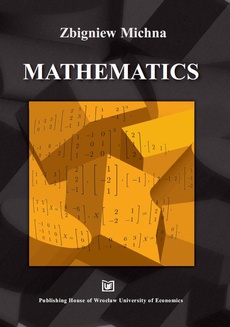
Mathematics
Autor:
Format:
ibuk
This handbook provides the basie rangę of the mathematical knowledge for the students of economics. It covers the elementary areas of linear algebra, mathematical analysis and probability. The program is based on the requisites of the Polish Ministry of Science and Higher Education. The principal aim of this book is to provide useful mathematical information in a lucid and accessible form. The book consists of three parts. In the first part the author considers the elementary notions and theorems in linear algebra such as matrix, determinant, rank of a matrix, system of linear eąuations and linear space. The second part is devoted to mathematical analysis. The author introduces the notion of limit, derivative, indefinite and definite integral. The last part of the book discusses the fundamental concepts of probability theory. The author considers probability space, random variables and random vectors what is an introduction to statistics for the students of economics. The book contains a lot of examples and tasks. The author hopes mat this handbook will be very helpful for students, academic teachers and everyone with a penchant for applicable mathematics.
| Rok wydania | 2012 |
|---|---|
| Liczba stron | 136 |
| Kategoria | Inne |
| Wydawca | Wydawnictwo Uniwersytetu Ekonomicznego we Wrocławiu |
| ISBN-13 | 978-83-7695-288-8 |
| Numer wydania | 1 |
| Język publikacji | angielski |
| Informacja o sprzedawcy | ePWN sp. z o.o. |
POLECAMY
Ciekawe propozycje
Spis treści
| 0.1 List of principle notations | 12 |
| I. Linear algebra 13 | |
| 1. Matrix 15 | |
| 1.1 Definition and examples | 15 |
| 1.2 Special matrices | 16 |
| 1.3 Operations with matrices | 17 |
| 1.4 Exercises | 18 |
| 2. Determinant of a matrix 20 | |
| 2.1 Definition | 20 |
| 2.2 Applications of determinant | 21 |
| 2.3 Calculation of higher dimension determinants | 22 |
| 2.4 Exercises | 25 |
| 3. Rank of a matrix 27 | |
| 3.1 Definition and examples | 27 |
| 3.2 Echelon matrix | 28 |
| 3.3 Exercises | 30 |
| 4. Linear equations 31 | |
| 4.1 Definition | 31 |
| 4.2 The Gauss method | 32 |
| 4.3 Exercises | 35 |
| 5. Linear space 37 | |
| 5.1 Definition and examples | 37 |
| 5.2 Linear independence | 38 |
| 5.3 Exercises | 40 |
| II. Calculus 43 | |
| 6. Sequence of numbers | 45 |
| 6.1 Limit of a sequence | 45 |
| 6.2 Series of numbers | 50 |
| 6.3 Exercises | 53 |
| 7. Limit of a function | 54 |
| 7.1 Definition and examples | 54 |
| 7.2 Exercises | 57 |
| 8. Derivative of a function 58 | |
| 8.1 Definition and examples | 58 |
| 8.2 Extremes | 62 |
| 8.3 Exercises | 65 |
| 9. Indefinite integral | 67 |
| 9.1 Definition and examples | 67 |
| 9.2 Exercises | 72 |
| 10. Definite integral 74 | |
| 10.1 Definition and examples | 74 |
| 10.2 Applications of Riemann integral | 77 |
| 10.3 Exercises | 80 |
| 11. Multivariable function 82 | |
| 11.1 Derivative of a multivariable function | 85 |
| 11.2 Extreme values of a function of two variables | 88 |
| 11.3 Extreme values of a function of three variables | 90 |
| 11.4 Exercises | 92 |
| III. Probability 95 | |
| 12. Probability space 97 | |
| 12.1 Definition and examples | 97 |
| 12.2 Examples of defining probability | 99 |
| 12.3 Conditional probability | 101 |
| 12.4 Exercises | 104 |
| 13. Random variable 106 | |
| 13.1 Definition and examples | 106 |
| 13.2 Discrete random variable | 108 |
| 13.2.1 Expected value and variance of discrete random variables | 110 |
| 13.3 Exercises | 113 |
| 13.4 Continuous random variables | 114 |
| 13.4.1 Expected value and variance of continuous random variables | 119 |
| 13.5 Quantile and kurtosis of a random variable | 122 |
| 13.6 Exercises | 123 |
| 14. Random vectors | 126 |
| 14.1 Definition and examples | 126 |
| 14.2 Correlation coefficient | 129 |
| 14.3 Exercises | 131 |


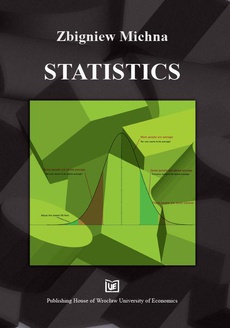














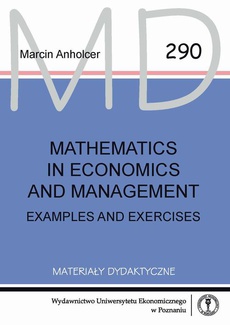
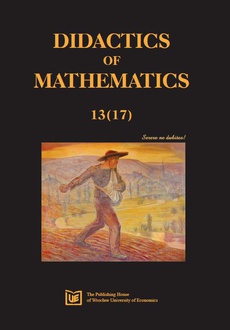
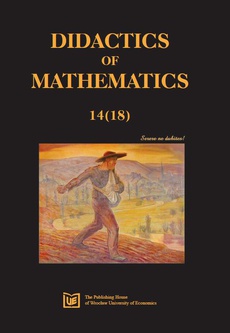
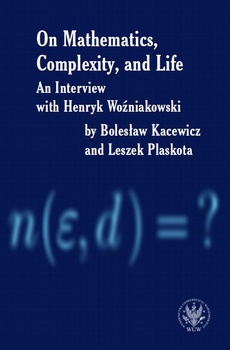


![Ekonomia 2023 [DEBIUTY STUDENCKIE]](https://o.ibuk.pl/okladki/230/d2/315479.jpg)

![Społeczeństwo, gospodarka i przestrzeń w globalnych uwarunkowaniach[DEBIUTY STUDENCKIE]](https://o.ibuk.pl/okladki/230/t/315455.jpg)
